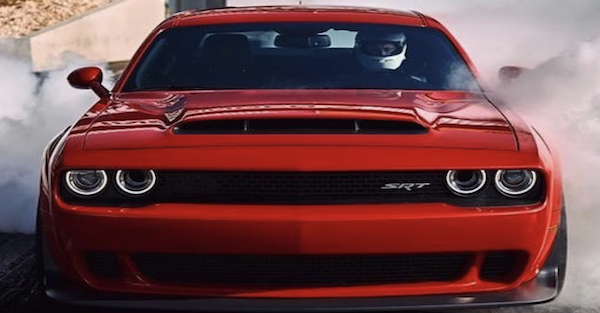If the world ended tomorrow, so many human aspirations would be left unfulfilled. Going to mars, hover boards (real ones, anyway), flying cars and gum that truly never loses its flavor. As important as all these, may be one aspiration we as humans can say has been accomplished is making horsepower, and the Cubs finally winning the World Series, but we can save that for another time.
When the Dodge Demon specs were released at 840 horsepower on race fuel and 808 on normal pump gas most were left thinking, "This is fake news." No doubt these numbers had been produced in the aftermarket but to have a factory production car that's listed as a low emissions vehicle (LEV), runs a nine second quarter mile and is about $85,000 is just insanity. To top it off, the Demon can run an 11.6 in the quarter in "Eco mode." That's what a 2013 Corvette Z06 runs in "Can't go any faster mode." Truly, this madness can not be topped and we are at the end of some kind of automotive era. Before it all ends, the Dodge team was nice enough to give an even closer look at how the Demon came about and some interesting technically info.
Before release of the Demon, only about 35 people knew all the details on the car. This is truly amazing considering the size of the Fiat Chrysler Automobiles group. To do this, everything was done on a need to know basis and with secret code names used left and right.
The Demon was originally called "Benny," behind closed doors. The project was so secretive that giving it a code name during the production stages of a fighter jet plane like "Hellcat" or the 392 Hemi's "Apache" would give too much away. When the team was given the green light to start on the project, their goal was simply to run 9s and lift the front tires off the ground. Because of that, they coined the phrase "9s with light," meaning light could be seen under the front tires. They used the mantra freely to keep motivated and because no one with out any context would have a clue as to its meaning.
The SRT team also took extraordinary measures to keep important components under wraps. According to allpar, when time came to build a fuel system, the department in charge was not given any info on what car it was for or how much power it needed to support. They only gave that team specific information on needed flow rate. This made it impossible for anyone to draw any conclusions as to a final product.
Engineers testing the Demon engine were even given specific times they could use the engine dyno room. The Demon engine is tested under load up to 5,200 rpm for 42 minutes straight and uses 1.36 gallons of fuel per minute at full power. Because of this the dyno room's fuel storage tanks would go dry quicker, causing a fuel shortage and would bring unneeded attention. As added precaution the dynos used were calibrated specifically to show Hellcat numbers to fool any curious FCA employees not directly related to the project.
Deliveries of the Demon start this fall with only 3,000 being sold in the States and 300 in Canada, making this definitely a halo car. Fiat Chrysler passenger car chief Tim Kuniskis has said that Challenger website traffic is up 50 percent with pricing inquiries up 20 percent. The Demon has already done its job as an awesome marketing tool.
With most all other info already out there, we are just left wondering one thing: "What kind of mpg's that thing get?"
